Direct Growth of Carbon Nanotubes on Aluminum Foil by Atmospheric Pressure Microwave Plasma Chemical Vapor Deposition
Abstract
:1. Introduction
2. Experiment
3. Experiment Results and Discussion
3.1. CNTs Grown on the Aluminum Foil with an Oxide Layer
3.2. CNTs Grown on the Aluminum Foil without an Oxide Layer
3.3. CNTs Growth Mechanism on the Aluminum Foil
4. Conclusions
Author Contributions
Funding
Acknowledgments
Conflicts of Interest
References
- Iijima, S. Helical microtubules of graphitic carbon. Nature 1991, 354, 56–58. [Google Scholar] [CrossRef]
- Eres, G.; Puretzky, A.A.; Geohegan, D.B. In situ control of the catalyst efficiency in chemical vapor deposition of vertically aligned carbon nanotubes on pre-deposited metal catalyst film. Appl. Phys. Lett. 2004, 84, 1759–1761. [Google Scholar] [CrossRef] [Green Version]
- Zhu, L.W.; Zhou, L.K.; Li, H.X.; Wang, H.F.; Lang, J.P. One-pot growth of free-standing CNTs/TiO2 nanofiber membrane for enhanced photocatalysis. Mater. Lett. 2013, 95, 13–16. [Google Scholar] [CrossRef]
- Cheng, J.; Zou, X.P.; Yang, G.Q. Temperature effects on synthesis of multi-walled carbon nanotubes by ethanol catalyst chemical vapor deposition. Adv. Mater. Res. 2010, 123, 799–802. [Google Scholar] [CrossRef]
- Li, W.Z.; Xie, S.S.; Qian, L.X.; Chang, B.H.; Zou, B.S. Large-scale synthesis of aligned carbon nanotubes. Science 1996, 274, 1701. [Google Scholar] [CrossRef]
- Lee, O.; Jung, J.; Doo, S.; Kim, S.S.; Noh, T.H.; Kim, K.I.; Lim, Y.S. Effects of temperature and catalysts on the synthesis of carbon nanotubes by chemical vapor deposition. Met. Mater. Int. 2010, 16, 663–667. [Google Scholar] [CrossRef]
- Youcef, F.; Kihel, M.; Sahli, S.; Raynayd, P. Synthesis of nanopowders in a PECVD reactor from organosilicon precursor. Phosphorus Sulfur 2019, 6, 1–5. [Google Scholar]
- Kobashi, K.; Nishimura, K.; Kawate, Y. Synthesis of diamonds by use of microwave plasma chemical-vapor deposition: Morphology and growth of diamond films. Phys. Rev. B Condens. Matter 1988, 38, 4067–4084. [Google Scholar] [CrossRef]
- Taylor, A.; Ashcheulov, P.; Hubík, P. Precursor gas composition optimisation for large area boron doped nano-crystalline diamond growth by MW-LA-PECVD. Carbon 2018, 128, 164–171. [Google Scholar] [CrossRef]
- Caughman, J.B.O.; Baylor, L.R.; Guillorn, M.A.; Merkulov, V.I.; Lowndes, D.H. Growth of vertically aligned carbon nanofibers by low-pressure inductively coupled plasma-enhanced chemical vapor deposition. Appl. Phys. Lett. 2003, 83, 1207. [Google Scholar] [CrossRef]
- Fan, S.S.; Chapline, M.G.; Franklin, N.R.; Tombler, T.W.; Cassell, A.M.; Dai, H.J. Self-oriented regular arrays of carbon nanotubes and their field emission properties. Science 1999, 283, 512–514. [Google Scholar] [CrossRef] [PubMed]
- Miao, J.Y.; Hwang, D.H.; Narasimhulu, K.V.; Lin, P.I.; Chen, Y.T.; Lin, S.H.; Hwang, L.P. Synthesis and properties of carbon nanospheres grown by CVD using Kaolin supported transition metal catalysts. Carbon 2004, 42, 813–822. [Google Scholar] [CrossRef]
- Dogru, I.B.; Durukan, M.B.; Turel, O.; Unalan, H.E. Flexible supercapacitor electrodes with vertically aligned carbon nanotubes grown on aluminum foils. Prog. Nat. Sci. Mater. Int. 2016, 26, 232–236. [Google Scholar] [CrossRef] [Green Version]
- Li, D.; Tong, L.; Gao, B. Synthesis of multiwalled carbon nanotubes on stainless steel by atmospheric pressure microwave plasma chemical vapor deposition. Appl. Sci. 2020, 10, 4468. [Google Scholar] [CrossRef]
- Tripathi, P.V.; Durbach, S.; Coville, N.J. Synthesis of multi-walled carbon nanotubes from plastic waste using a stainless-steel CVD reactor as catalyst. Nanomaterials 2017, 7, 284. [Google Scholar] [CrossRef]
- Chen, J.; Gao, F.; Zhang, L.; Huang, S. Catalyst-free growth of oriented single-walled carbon nanotubes on mica by ethanol chemical vapor deposition. Mater. Lett. 2009, 63, 721–723. [Google Scholar] [CrossRef]
- Li, L.; Wu, Z.; Yuan, S.; Zhang, X.B. Advances and challenges for flexible energy storage and conversion devices and systems. Energy Environ. Sci. 2014, 7, 2101–2122. [Google Scholar] [CrossRef]
- Wang, X.; Lu, X.; Liu, B.; Chen, D.; Tong, Y.; Shen, G. Flexible energy-storage devices: Design consideration and recent progress. Adv. Mater. 2014, 26, 4763–4782. [Google Scholar] [CrossRef]
- Balamurugan, J.; Nguyen, T.T.; Aravindan, V.; Kim, N.H.; Lee, S.H.; Lee, J.H. All ternary metal selenide nanostructures for high energy flexible charge storage devices. NANO Energy 2019, 65, 103999. [Google Scholar] [CrossRef]
- Jung, M.; Kim, H.G.; Lee, J.K.; Joo, O.S.; Mho, S.I. EDLC characteristics of CNTs grown on nanoporous alumina templates. Electrochim. Acta 2004, 50, 857–862. [Google Scholar] [CrossRef]
- Ghai, V.; Chatterjee, K.; Agnihotri, P.K. Vertically aligned carbon nanotubes-coated aluminum foil as flexible supercapacitor electrode for high power applications. Carbon Lett. 2020. [Google Scholar] [CrossRef]
- Emmenegger, C.; Bonard, J.M.; Mauron, P.; Sudan, P.; Lepora, A.; Grobety, B.; Zuttel, A.; Schlapbach, L. Synthesis of carbon nanotubes over Fe catalyst on aluminuim and suggested growth mechanism. Carbon 2003, 41, 539–547. [Google Scholar] [CrossRef]
- Lin, C.C.; Yang, C.L. Carbon nanotubes grown on nanoporous alumina templates/aluminum foil for electrodes of aluminum electrolytic capacitors. J. Electrochem. Soc. 2010, 157, A237–A241. [Google Scholar] [CrossRef]
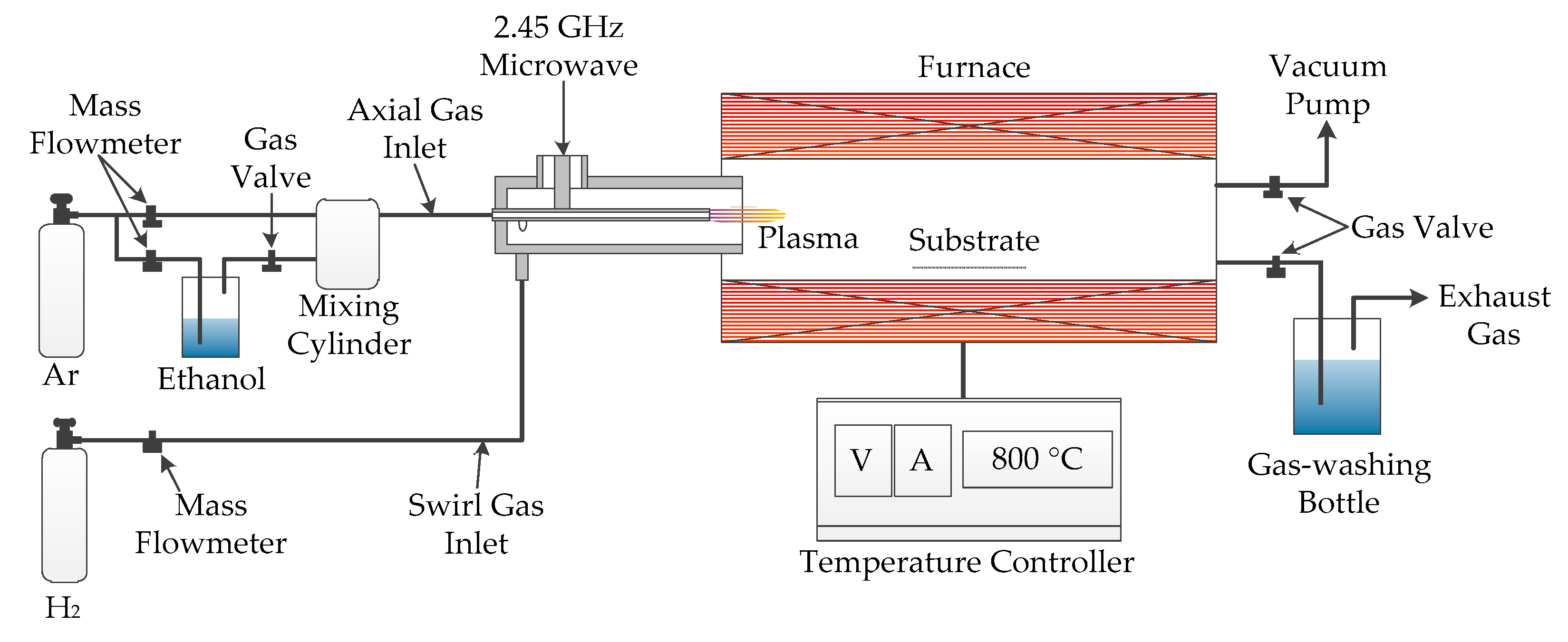

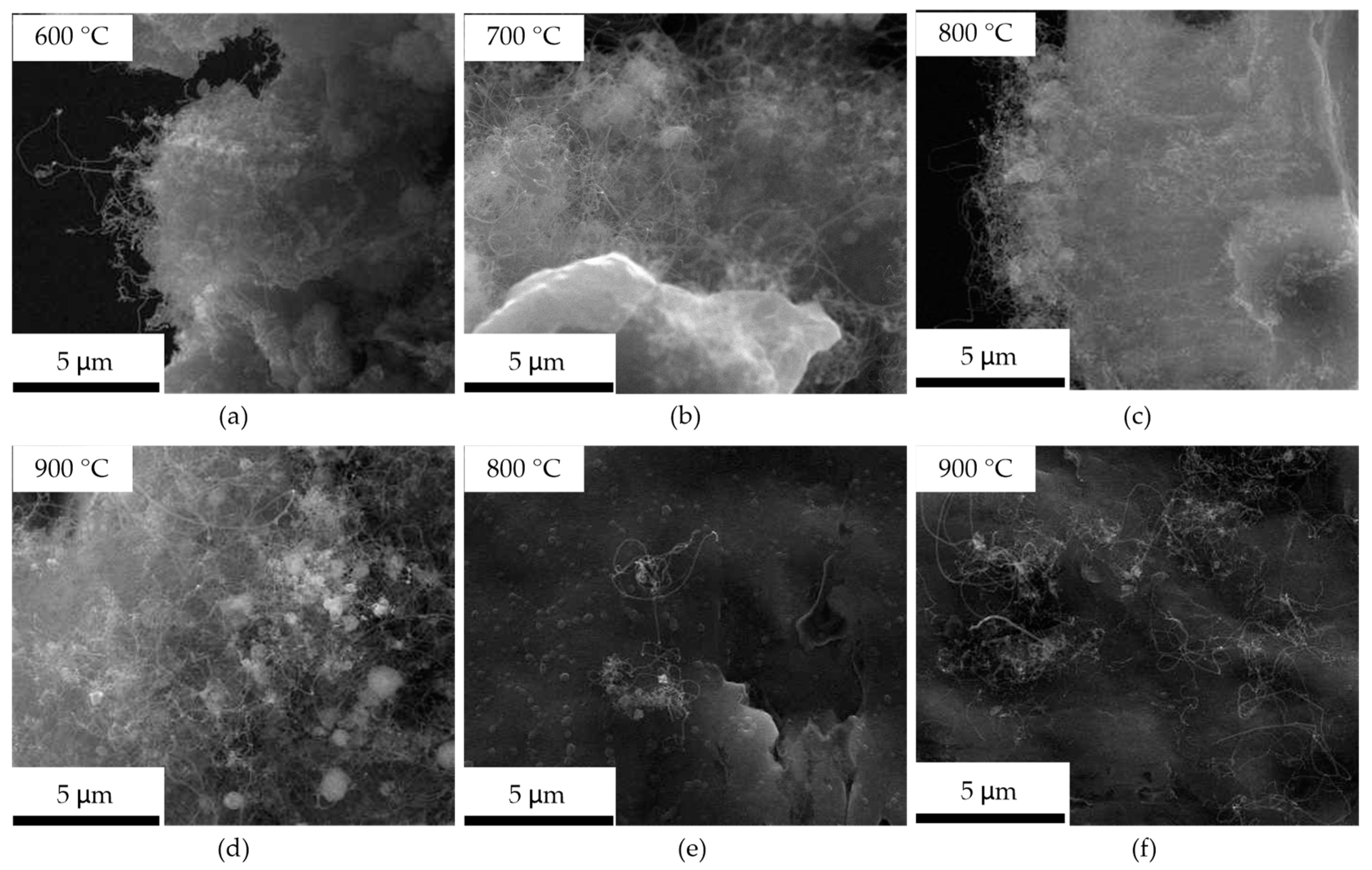
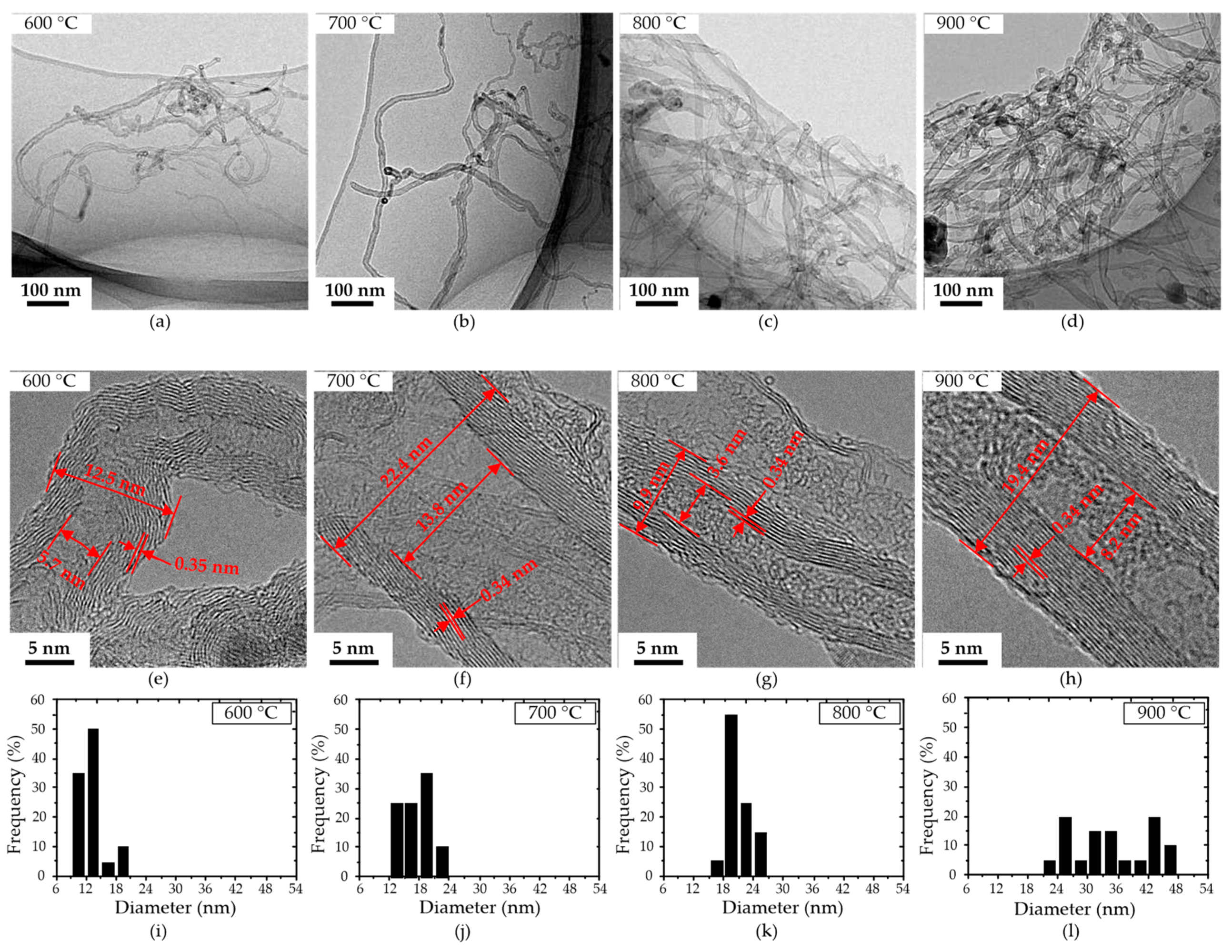
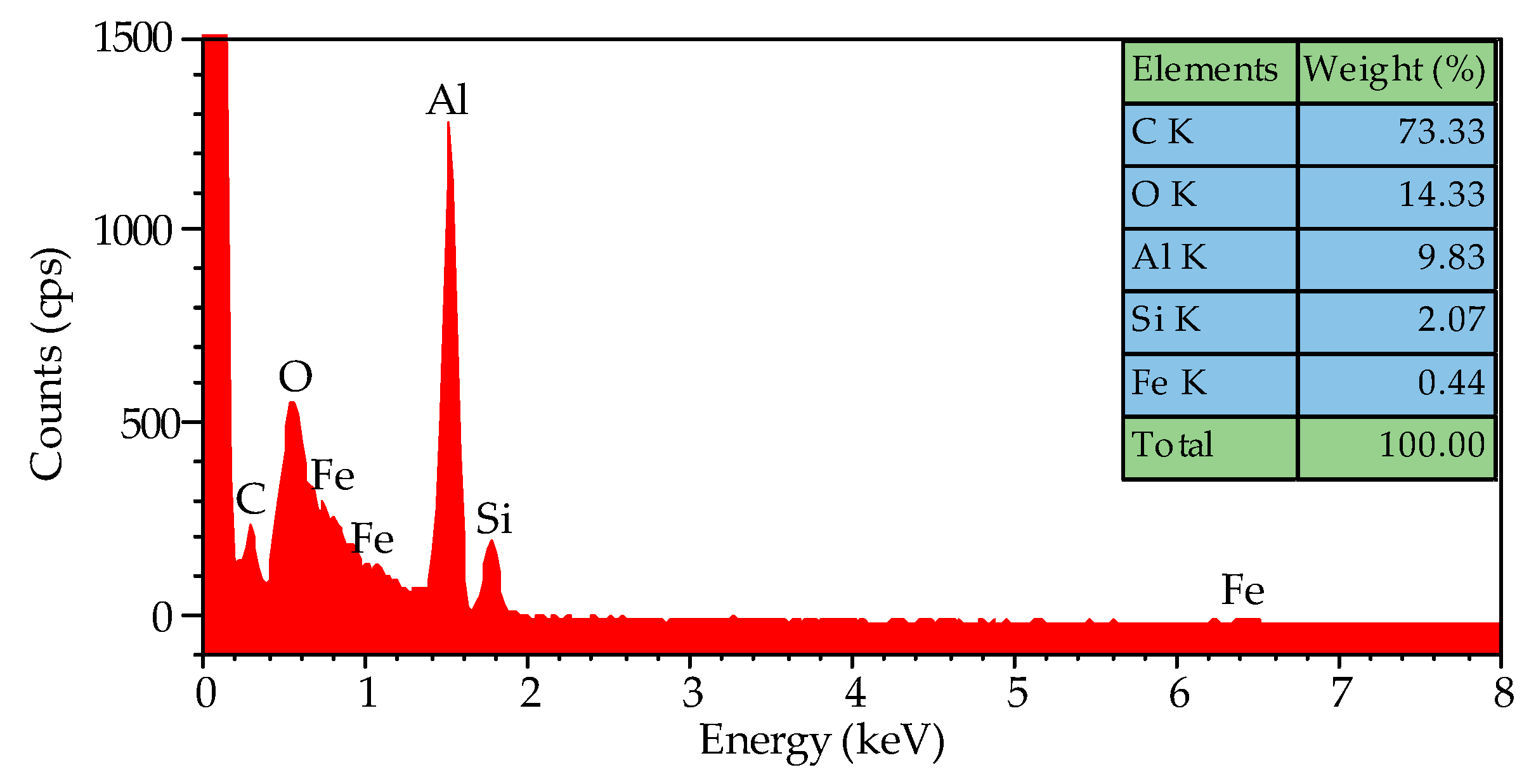
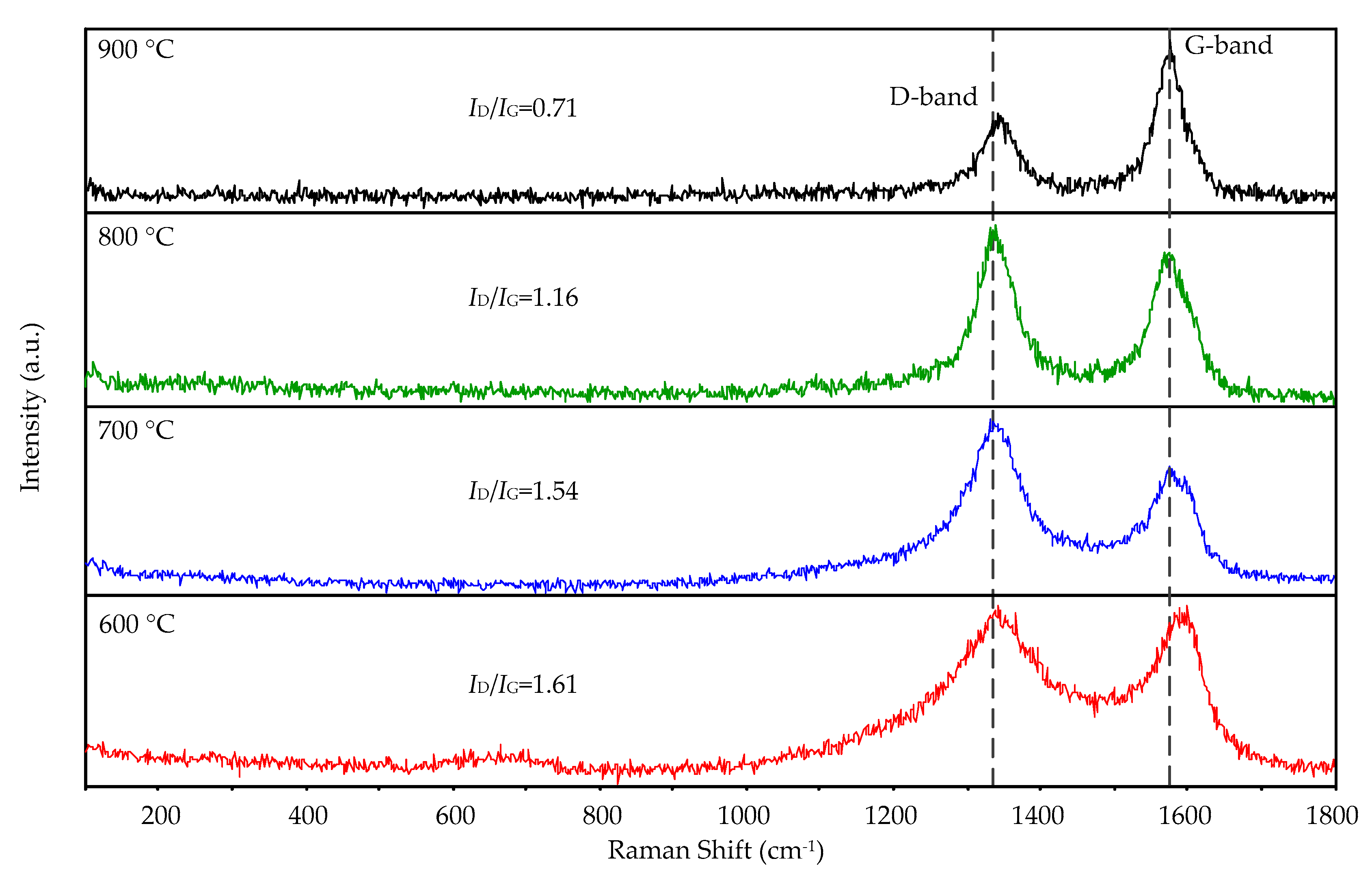






Publisher’s Note: MDPI stays neutral with regard to jurisdictional claims in published maps and institutional affiliations. |
© 2020 by the authors. Licensee MDPI, Basel, Switzerland. This article is an open access article distributed under the terms and conditions of the Creative Commons Attribution (CC BY) license (http://creativecommons.org/licenses/by/4.0/).
Share and Cite
Li, D.; Tong, L. Direct Growth of Carbon Nanotubes on Aluminum Foil by Atmospheric Pressure Microwave Plasma Chemical Vapor Deposition. Processes 2021, 9, 36. https://doi.org/10.3390/pr9010036
Li D, Tong L. Direct Growth of Carbon Nanotubes on Aluminum Foil by Atmospheric Pressure Microwave Plasma Chemical Vapor Deposition. Processes. 2021; 9(1):36. https://doi.org/10.3390/pr9010036
Chicago/Turabian StyleLi, Dashuai, and Ling Tong. 2021. "Direct Growth of Carbon Nanotubes on Aluminum Foil by Atmospheric Pressure Microwave Plasma Chemical Vapor Deposition" Processes 9, no. 1: 36. https://doi.org/10.3390/pr9010036




